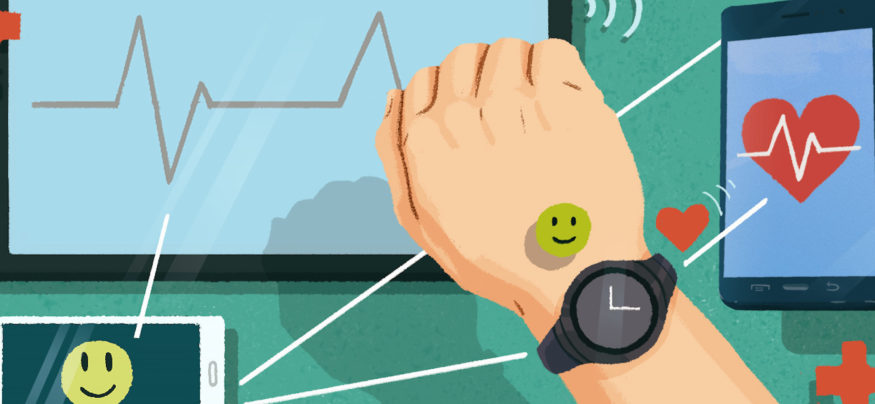The past few years have transformed the medical industry. Healthcare reform created new policies, procedures and paperwork. Add to that an increased number of insured patients and an aging patient population, and healthcare providers are now busier than ever.
Thankfully, technological innovation offers new tools to streamline workflows and connect care providers with patients from anywhere, at any time, on any device.
From wearables in healthcare to remote patient monitoring to digitized home health services, the following trends are reshaping the patient experience and helping organizations deliver top-notch care while cutting costs.
Connected Healthcare Trends
Forward-thinking healthcare leaders are looking for new ways to achieve strategic goals. Seventy-two percent say patient engagement, satisfaction and quality of care will have a major impact on their organizations in the coming years, according to HIMSS. Eighty-one percent believe that IT is key for improving these business drivers.
Here’s how technology is reshaping healthcare:
1. Mobile Devices Streamline Workflows and Communication
In the past, hospitals and physicians’ offices relied on paper charts and computers to document patient care and access health records, and pagers and landline phones to communicate with colleagues. Now equipped with smartphones and tablets, care providers can accomplish these tasks without touching a pen or finding an available computer. By using Samsung Galaxy devices with Samsung KNOX — a HIPAA-compliant solution that separates work data from personal data — care providers can manage their work and lives from one device.
This increase in healthcare mobility makes medical professionals more efficient, reduces the possibility for human error and ensures medical teams see the same patient information in real time.
2. Wearables in Healthcare Transform Corporate Wellness Programs
Many industries are now leveraging wearable technology, but healthcare might be where these devices can have the greatest impact. In fact, 56 percent of people say the average life expectancy will increase by 10 years because of wearables in healthcare, according to PwC.
Employers believe this, too, and many are investing in wearable solutions that fit seamlessly into employees’ lives and track useful health data. Wearables give people an accurate snapshot of their lifestyles, and with support from corporate wellness programs, individuals can make lifestyle adjustments that contribute to a healthy workforce and a healthy bottom line.
3. Digital Signage Provides a New Way to Communicate With Patients
Modern medical complexes can be overwhelming. Simply finding one’s way through long hallways, with wings that only connect in certain places and elevators that only stop on certain floors, is challenging enough. Searching for an easy-to-read map amid myriad bulletin boards and flyers only adds to the confusion and anxiety.
Digital signage removes the visual clutter and makes communication easy. Along with interactive wayfinding stations, hospitals also use these energy-efficient screens to present up-to-date information about patient safety, wellness awareness, upcoming events and even cafeteria menus.
4. Remote Patient Monitoring and Connected Devices Help Seniors Age in Place
America’s largest generation will soon be its oldest. By 2030, all baby boomers will have reached old age, and according to AARP, 86 percent want to remain in their homes for as long as possible. Connected homes can empower many independent seniors to do just that, while enabling healthcare providers and family members to remotely monitor their health and safety.
For example, the Samsung SmartThings Hub connects sensors that detect room characteristics such as temperature and status changes such as doors opening or closing. It also connects with wearable devices that track the location and body position of seniors within the home, alerting family members or physicians when seniors are in distress. Care providers can also gather health data on these patients by connecting mobile devices to wearable health sensors such as blood pressure cuffs, weight scales, glucometers and heart monitors.
5. Home Healthcare and Hospice Get a Digital Makeover
Whether patients are recovering from serious illnesses or injuries, or managing chronic diseases, most want to heal at home. This preference, along with government pressure to reduce hospital readmissions, has caused the home healthcare industry to nearly double in size since 2004.
To accommodate the growing workload and streamline day-to-day operations for these roving workforces, an increasing number of home healthcare agencies are investing in mobile solutions. Smartphones, tablets and wearables help agencies to better manage mobile employees, decrease paperwork, communicate up-to-date information, comply with government regulations and improve patient care.
This is only the beginning for innovations in connected care. As tech companies and healthcare providers continue to innovate together, mobile technology will continue reshaping the medical industry in 2016 and beyond.








